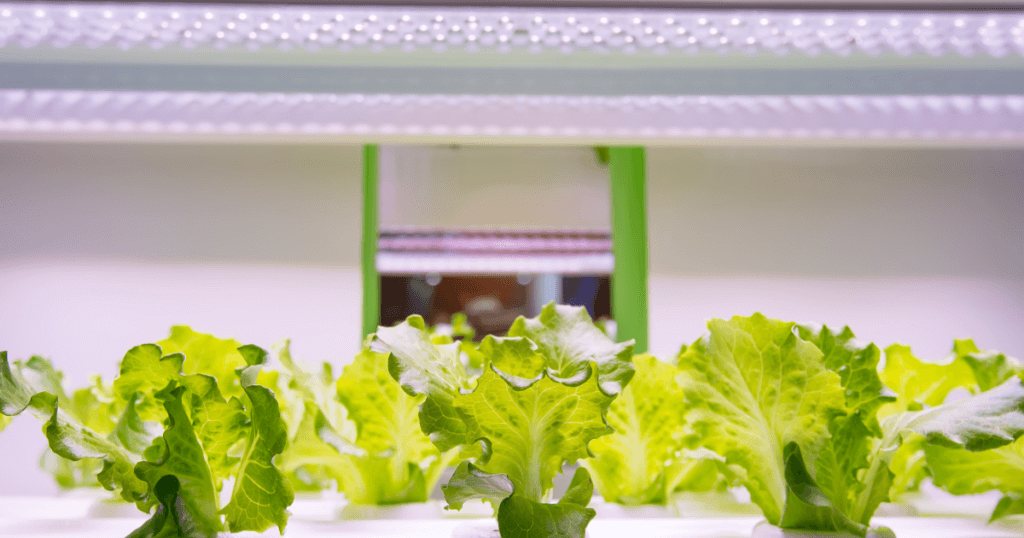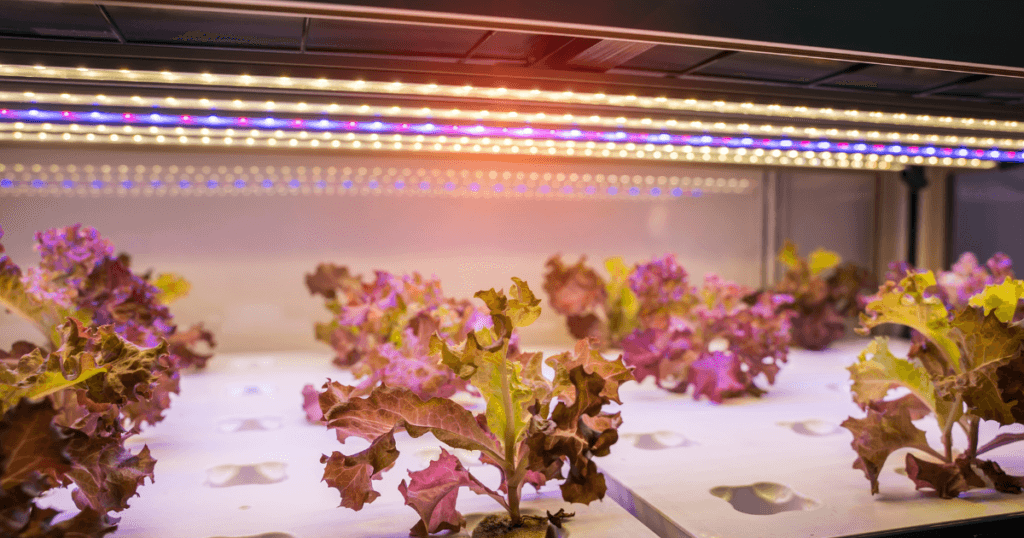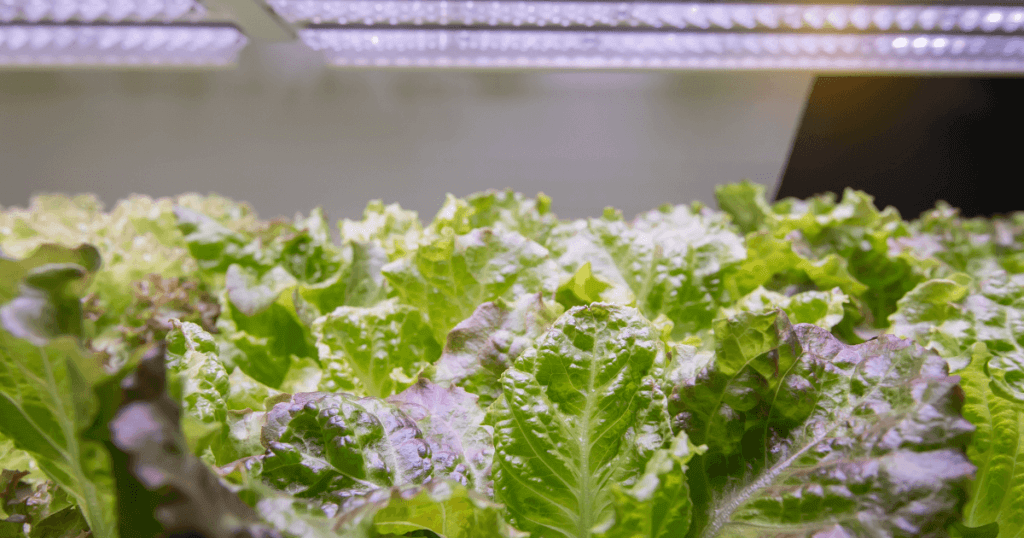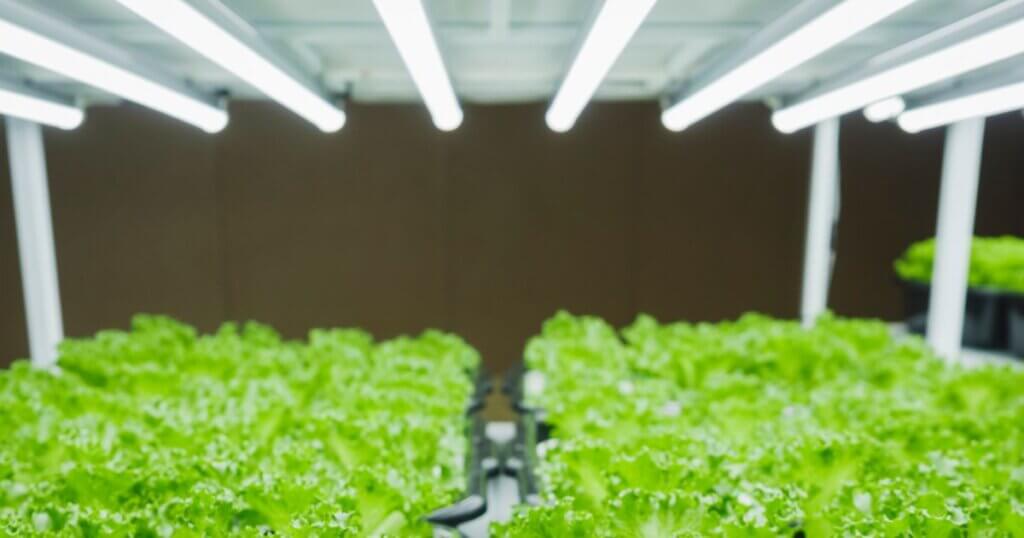LED Grow Lights: The Ultimate Guide to Maximizing Indoor Farming Success
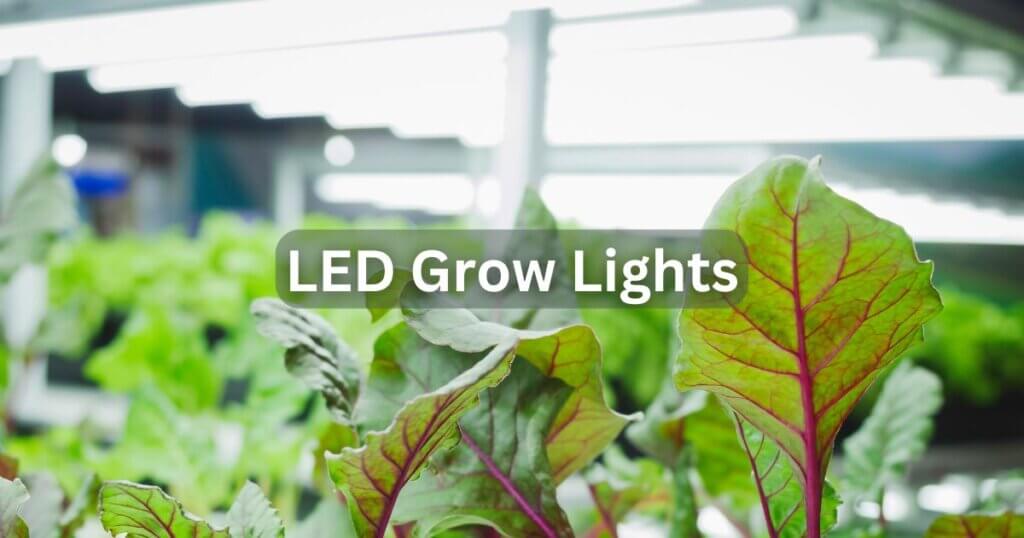
Some of the links in this post are affiliate links. As an Amazon Associate, we earn a referral fee from qualifying purchases—at no extra cost to you.
Are you ready to take your indoor farming to the next level? Look no further than LED grow lights! These revolutionary lighting solutions have transformed the way we grow plants indoors. With their energy-efficient technology and customizable features, LED grow lights are the go-to choice for modern farmers. This comprehensive guide explores the benefits, features, and best practices of using LED grow lights to illuminate your indoor farm. Let’s dive in and discover how you can optimize your plant growth and achieve outstanding yields!
Table of Contents
Indoor farming has gained popularity as an efficient and sustainable method for growing plants. To ensure successful indoor cultivation, it is crucial to provide plants with optimal lighting conditions. LED grow lights have emerged as a revolutionary solution in the agricultural industry, offering efficiency and customization. Whether growing herbs, vegetables, or flowers, investing in LED grow lights enhances crop yield and quality.
Why LED Grow Lights?
Lighting plays a critical role in plant growth and development in indoor farming. Unlike traditional lighting options, LED grow lights offer numerous advantages that make them the preferred choice. Their efficiency, customization, and longevity set them apart from fluorescent and incandescent bulbs. Let’s explore the reasons why LED grow lights are transforming modern agriculture.
Benefits of LED Grow Lights
Enhanced Energy Efficiency
LED grow lights are highly energy-efficient compared to traditional lighting technologies. They require significantly less electricity to produce the same amount of light, reducing energy costs for indoor farmers. Lower energy consumption makes indoor cultivation more economically viable and sustainable. By minimizing power usage, growers can cultivate plants without excessive utility bills.
Tailored Light Spectrum
One of the standout features of LED grow lights is their ability to provide a customized light spectrum. Different light wavelengths influence plant growth, and LEDs allow growers to fine-tune this spectrum. Adjusting the balance of red, blue, and other wavelengths optimizes photosynthesis and nutrient absorption. This customization leads to healthier and more robust plants.
The VIVOSUN VS2000 LED Grow Light is a full-spectrum LED grow light designed for indoor plants. It features adjustable spectrum knobs for customizing red and blue light, mimicking natural sunlight and enhancing growth at every stage. Ideal for small indoor grow tents and hydroponic setups.
Long Lifespan
LED grow lights have a significantly longer lifespan compared to traditional bulbs. With an average usage range of 50,000 to 100,000 hours, they outperform incandescent and fluorescent lights. This longevity reduces the frequency and cost of replacements, saving money over time. Consistent and reliable lighting ensures a stable environment for indoor crops.
Minimal Heat Generation
Unlike traditional lighting, LED grow lights emit very little heat. Excessive heat can harm plants by causing dehydration and stunted growth. LEDs maintain a controlled temperature, reducing the risk of heat stress and plant damage. Their low heat output allows for closer placement to plants without adverse effects.
Environmentally Friendly
LED grow lights offer an eco-friendly alternative to conventional lighting solutions. Unlike fluorescent bulbs, they do not contain hazardous substances such as mercury. Their high energy efficiency also contributes to a reduced carbon footprint. Choosing LED grow lights supports sustainable farming and environmental conservation efforts.
Understanding Light Spectrum
To maximize the benefits of LED grow lights, it is important to understand how different light wavelengths impact plant growth. Photosynthesis, the process where plants convert light into chemical energy, relies on specific wavelengths. By adjusting the light spectrum, growers can achieve desired growth patterns. Let’s examine how various light wavelengths influence indoor farming.
Photosynthesis and Plant Growth
Photosynthesis is fundamental to plant growth and energy production. Chlorophyll-a and chlorophyll-b are the primary pigments responsible for absorbing light. Chlorophyll-a absorbs red and blue light, while chlorophyll-b absorbs blue and red-orange wavelengths. Understanding these pigments helps in optimizing plant growth under LED lighting.
Role of Different Light Wavelengths
Red Light
Red light, ranging from 620 to 700 nm, is essential for photosynthesis. It promotes carbohydrate synthesis, which fuels plant growth and development. This wavelength is particularly beneficial during flowering and fruiting stages. Ensuring adequate red light exposure enhances yield and crop quality.
Blue Light
Blue light, with a wavelength range of 400 to 500 nm, is crucial for structural development. It influences leaf formation, stem growth, and plant height. Blue light is especially important during the vegetative stage, where plants require energy for foliage production. Adequate blue light exposure results in sturdy, well-formed plants.
Other Wavelengths
Beyond red and blue light, additional wavelengths also contribute to plant health. Ultraviolet (UV) light stimulates secondary metabolite production, enhancing plant resilience. Far-red light (700-800 nm) impacts seed germination and flowering patterns. A well-balanced spectrum incorporating these wavelengths optimizes plant development.
Factors to Consider When Choosing LED Grow Lights
Selecting the right LED grow lights involves several key factors. Light intensity, spectrum, energy efficiency, and durability all influence performance. Understanding these elements ensures an effective indoor farming setup. Let’s explore the crucial aspects of choosing the best LED grow lights.
Light Intensity and Coverage Area
Light intensity, measured in foot candles or lux, determines brightness levels. Different plants require varying intensities for optimal growth. The coverage area must also be considered to ensure uniform illumination. Choosing appropriately powerful lights prevents uneven growth and underdeveloped crops.
Optimal Light Spectrum
Customizable light spectrums are essential for supporting plant growth at various stages. Adjustable ratios of red, blue, and other wavelengths enhance plant health. Growers should select LED lights with spectrum control features. This flexibility ensures plants receive ideal lighting throughout their lifecycle.
Energy Efficiency and Power Consumption
Efficient energy consumption is vital for reducing operational costs. LED grow lights excel in energy savings compared to traditional lighting methods. High-efficiency ratings and low power usage maximize cost-effectiveness. Choosing energy-efficient LEDs supports sustainable and economical farming.
Durability and Lifespan
Investing in long-lasting LED grow lights ensures reliable performance. Sturdy materials and robust components contribute to durability. A longer lifespan reduces maintenance and replacement costs. High-quality LEDs provide consistent lighting for successful indoor farming.
Cooling Systems and Heat Dissipation
Efficient heat dissipation prevents plant damage and overheating. LED grow lights should include cooling mechanisms like heat sinks or fans. Proper ventilation maintains optimal temperature levels for plant growth. Effective cooling enhances light performance and longevity.
The AC Infinity CLOUDLINE T4 is a quiet inline duct fan system that provides excellent cooling and humidity control. Its smart controller adjusts fan speed based on environmental conditions, helping maintain optimal growing temperatures for LED-lit grow rooms.
Cost Considerations
While LED grow lights offer long-term savings, upfront costs vary. Comparing prices, warranties, and features helps in making a cost-effective decision. Investing in reputable brands ensures quality and durability. High-quality LEDs provide better long-term value and performance.
Setting Up LED Grow Lights
Proper installation maximizes the benefits of LED grow lights. Correct positioning and scheduling improve plant growth efficiency. Following best practices ensures optimal lighting conditions. Let’s look at how to set up LED grow lights effectively.
Determining Lighting Requirements
Assessing plant-specific lighting needs is crucial for setting up an efficient indoor farm. Different crops require varying light intensities and durations to support their growth and maximize yields. Some plants, such as leafy greens, thrive under lower light levels while fruiting plants like tomatoes demand higher intensity and longer exposure. Consulting horticulture guides, scientific studies, or experienced growers helps determine the best lighting approach, ensuring optimal photosynthesis and plant development. Proper planning and understanding lighting requirements ultimately enhance crop quality, productivity, and overall farming success.
Positioning and Hanging the Lights
Proper positioning of LED grow lights is essential to ensure even light distribution across the plant canopy. Lights should be hung at appropriate heights, as placing them too close can cause light burn, while positioning them too far may result in insufficient exposure. Adjustable hanging systems, such as pulley systems or movable racks, allow growers to modify light placement as plants grow taller. Ensuring uniform light coverage minimizes shadows and hotspots, leading to healthier, more evenly developed plants with consistent growth patterns.
The VIVOSUN Rope Hanger offers an easy and secure way to adjust the height of LED grow lights. Made with durable stainless steel hooks and a 150 lb weight capacity, it allows growers to easily raise or lower lights as plants grow.
Scheduling Light Cycles
Plants require specific light cycles to regulate their growth and reproduction effectively. During the vegetative stage, most crops need 12 to 16 hours of light per day to promote strong leaf and stem development. In contrast, the flowering and fruiting stages typically require shorter light durations of 8 to 12 hours, mimicking natural seasonal changes. Using programmable timers helps maintain consistent light schedules, preventing disruptions in growth patterns and optimizing plant productivity. Properly timed light cycles support healthy development, improve yield quality, and reduce the risk of stress-related issues in indoor plants.
This 7-day digital timer by BN-LINK automates your grow light schedule with ease. Featuring up to 8 on/off programs per day, it’s perfect for managing light cycles during vegetative and flowering stages, improving plant health and consistency.
Supplemental Lighting Techniques
In some indoor farming setups, supplemental lighting techniques may be necessary to achieve full light coverage. Reflective surfaces, such as Mylar sheets or white walls, help distribute light evenly by bouncing it back onto plants, reducing wasted energy. Supplemental light sources, such as side-mounted LEDs or additional fixtures in shaded areas, can fill in gaps where primary lights do not reach. These techniques enhance overall light efficiency, promote uniform plant growth, and ensure that all crops receive adequate illumination for optimal photosynthesis.
Tips for Maximizing Plant Growth with LED Grow Lights
Light Distance and Intensity
Adjusting the height of LED grow lights is crucial to meet the specific light intensity needs of different plants. Some plants require high-intensity light for optimal growth, while others thrive under lower-intensity levels. Regularly monitoring plant response, such as leaf coloration and growth patterns, helps fine-tune light placement to prevent stress or stunted development. Maintaining the proper distance between lights and plants ensures balanced growth, prevents light burn, and maximizes photosynthetic efficiency.
Customizing Light Spectrums
Experimenting with spectrum adjustments allows growers to optimize plant development at different stages. During the vegetative phase, plants benefit from higher blue light levels, which promote strong stem and leaf growth. In contrast, the flowering stage requires increased red light exposure to encourage blooming and fruit production. By tailoring light exposure to specific plant needs, growers can enhance yield, improve crop quality, and achieve healthier, more resilient plants.
Adjusting Light Cycles for Different Growth Stages
Modifying light schedules as plants transition between growth stages ensures optimal development. The vegetative stage typically requires 14 to 18 hours of light daily to support robust foliage growth. When plants enter the flowering phase, reducing the light cycle to 10 to 12 hours encourages blooming and fruit production. Aligning light cycles with plant requirements maximizes growth potential, prevents premature flowering, and ensures a high-quality harvest.
Monitoring and Managing Heat
Maintaining stable temperature levels is essential to prevent heat stress, which can negatively impact plant health and productivity. Excessive heat from grow lights can lead to dehydration, leaf curling, and reduced nutrient absorption. Ensuring proper ventilation, using heat sinks, or incorporating cooling fans helps regulate temperatures and prevent heat buildup. Effective heat management safeguards plant health and extends the lifespan of LED grow lights, ensuring consistent performance.
Ensuring Proper Ventilation and Airflow
Adequate airflow plays a vital role in preventing humidity buildup, which can lead to mold, mildew, and fungal infections. Proper ventilation systems, such as exhaust fans or oscillating fans, help maintain an ideal growing environment by reducing excess moisture and circulating fresh air. Consistent air circulation strengthens plant stems, enhances gas exchange, and improves overall plant resilience. Ensuring sufficient airflow creates a healthier indoor farming setup, reducing the risk of diseases and promoting vigorous plant growth.
The iPower Inline Duct Fan is essential for any grow room. With variable speed control and a 6-inch diameter, it ensures optimal air movement, reduces mold risk, and strengthens plant stems for healthier growth.
Conclusion
LED grow lights offer energy-efficient, customizable, and sustainable lighting solutions. Their long lifespan, minimal heat output, and eco-friendliness make them an excellent choice. Proper selection, setup, and usage enhance indoor farming success. Investing in high-quality LED grow lights unlocks the full potential of indoor agriculture.
FAQs – LED Grow Lights
1. Can LED grow lights be used for all types of plants?
Yes, LED grow lights can be used for a wide range of plants, including vegetables, herbs, flowers, and even some fruit-bearing plants. However, different plants have unique light spectrum and intensity needs, so selecting the right LED setup is crucial.
2. Do LED grow lights work in all indoor environments?
LED grow lights are versatile and work in most indoor environments, including grow tents, greenhouses, and hydroponic setups. However, factors like ventilation, humidity, and space constraints should be considered for optimal plant growth.
3. Are LED grow lights safe for humans and pets?
Generally, LED grow lights are safe for humans and pets, as they do not emit harmful UV rays in significant amounts. However, prolonged direct exposure to intense light can cause eye strain or discomfort, so it’s advisable to wear protective glasses when working near them.
4. Can I mix LED grow lights with natural sunlight?
Yes, combining LED grow lights with natural sunlight can enhance plant growth, especially in areas with limited daylight hours. LED lights can supplement natural light to maintain consistent growth cycles.
5. How do I troubleshoot LED grow lights if they stop working?
If your LED grow lights stop working, check the power source, inspect the wiring, and ensure the cooling system is functioning properly. Sometimes, driver issues or faulty diodes can be the problem, in which case contacting the manufacturer for support is recommended.
Other Useful Resources Related To LED Grow Lights
- Benefits of LED Grow Lights for Plants and Indoor Gardens
This article discusses how LED grow lights can mimic sunlight, offering benefits like energy efficiency and a customizable light spectrum. - The Pros and Cons of Using LED Lights in Your Grow Operation
This piece explores the advantages and disadvantages of LED grow lights, covering aspects like efficiency, temperature, and light spectrum. - The Benefits of Grow Lights for Indoor Plants
This resource highlights the differences between standard LED lights and grow lights, emphasizing factors like light intensity and energy efficiency. - Do Grow Lights Work? Everything You Need to Know
This guide explains how high-quality, full-spectrum grow lights can substitute for sunlight, detailing the requirements for indoor plant growth. - Discover the Advantages and Disadvantages of LED Grow Lights
This article provides insights into various types of LED grow lights, helping readers select the best option for their indoor gardening needs.
Some Interesting LED Grow Lights Videos






